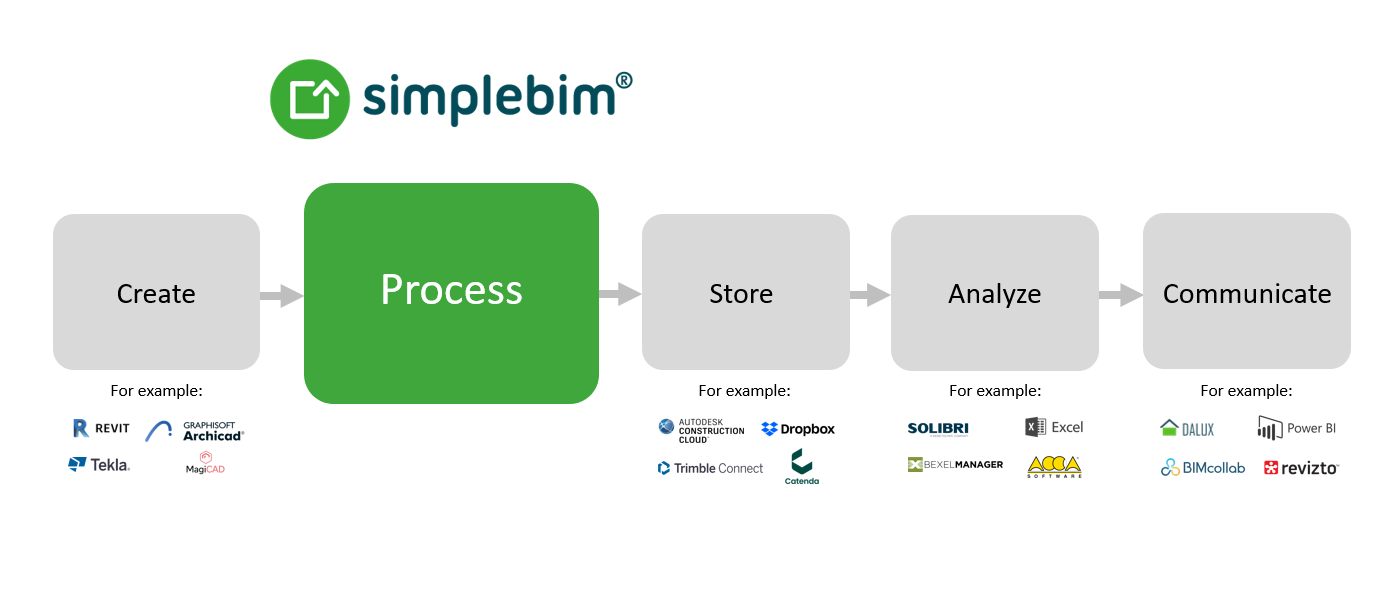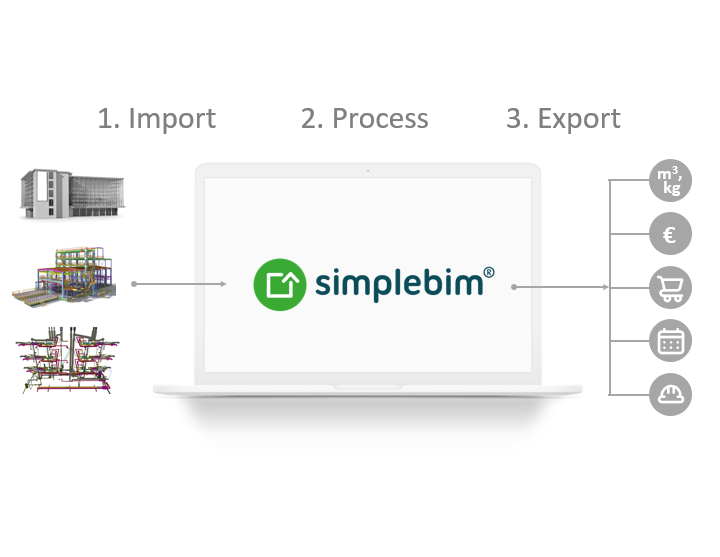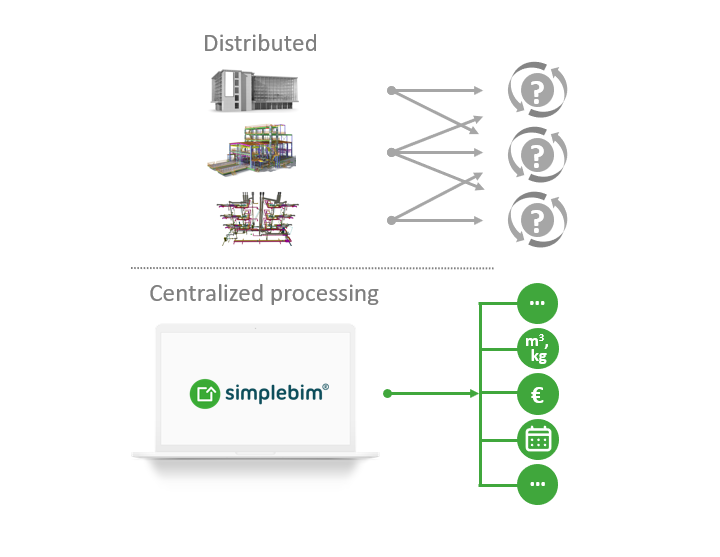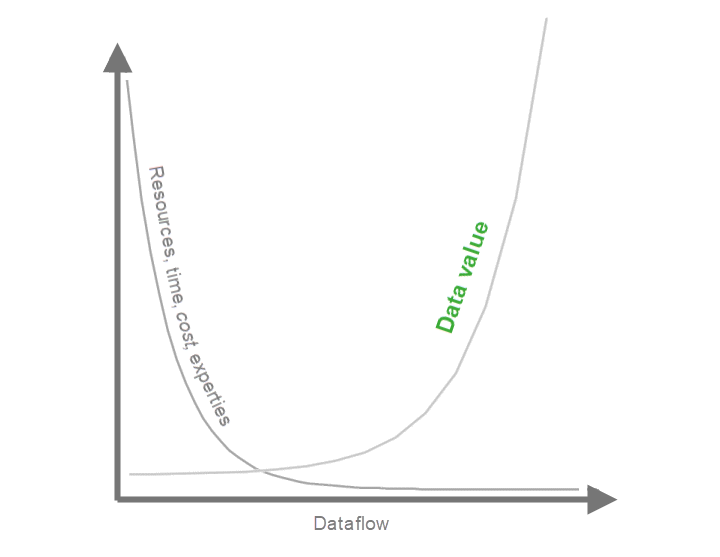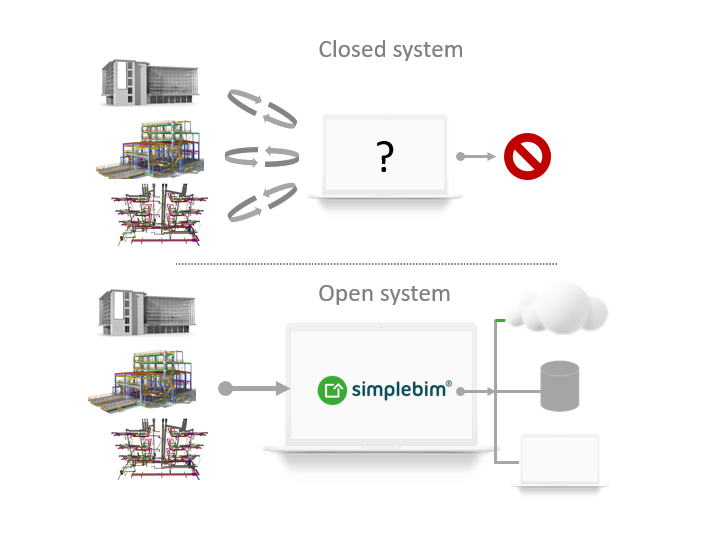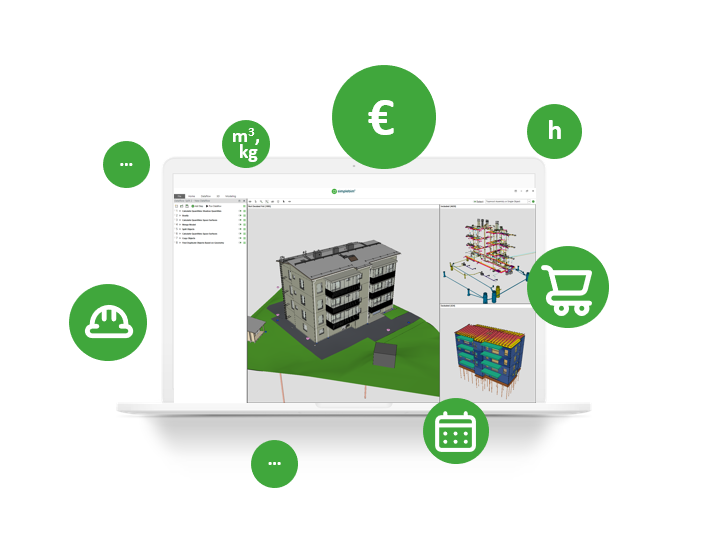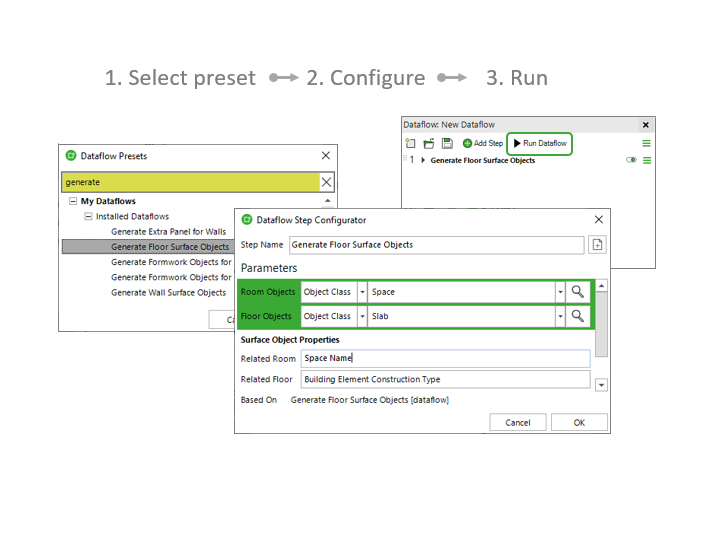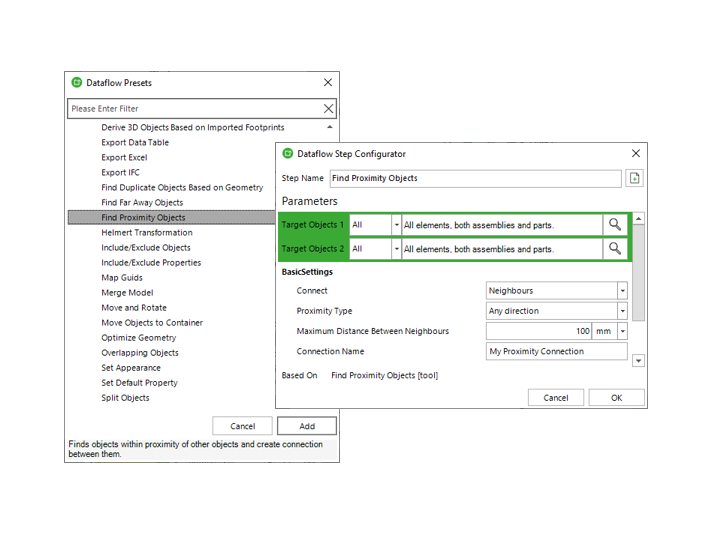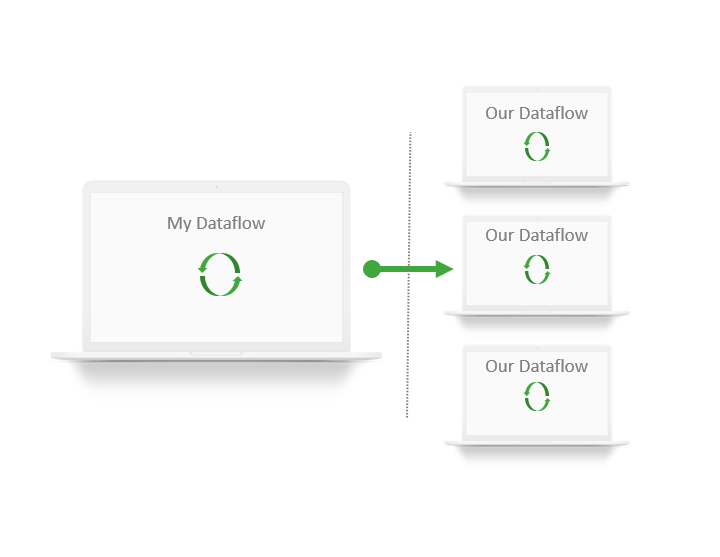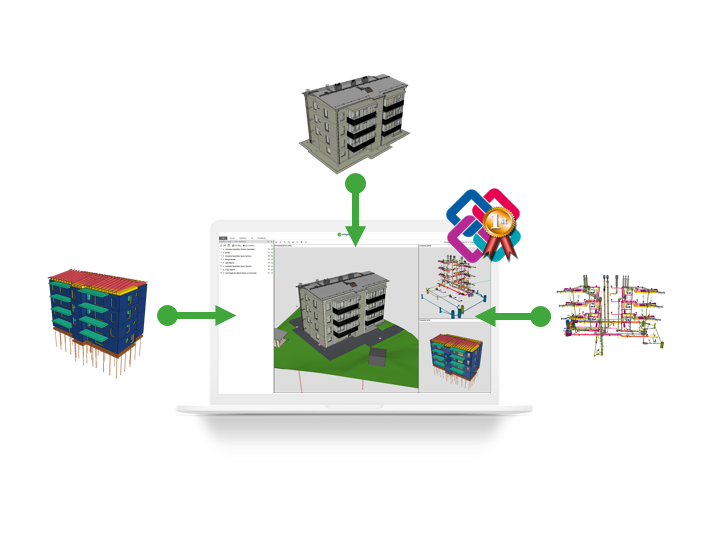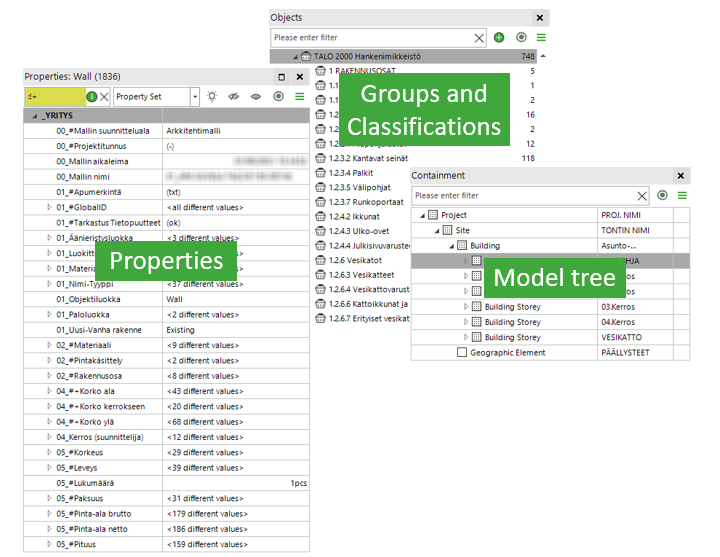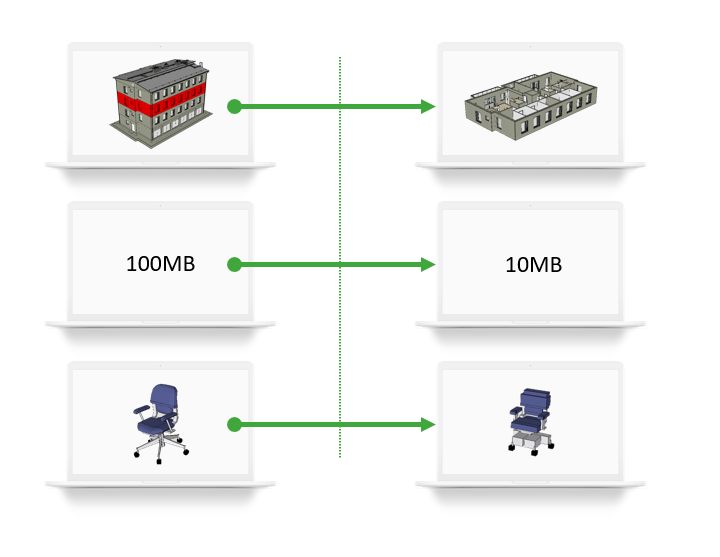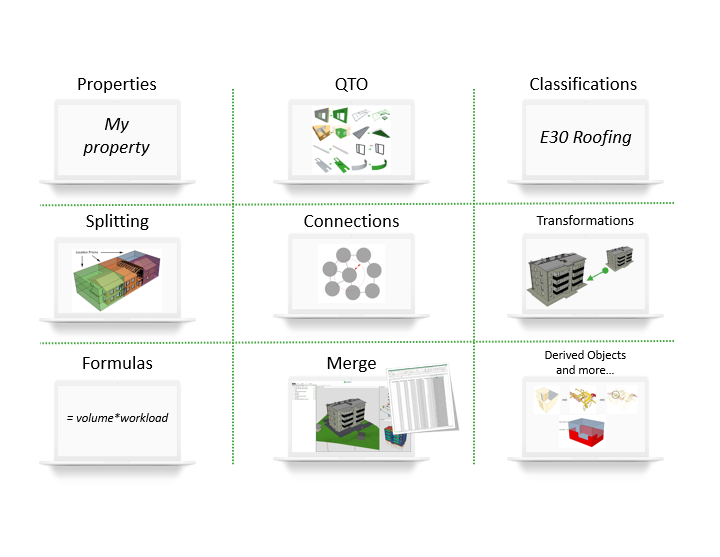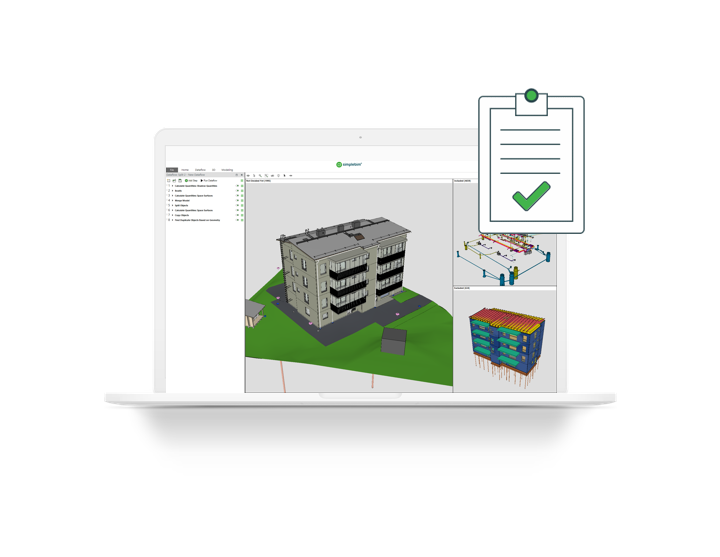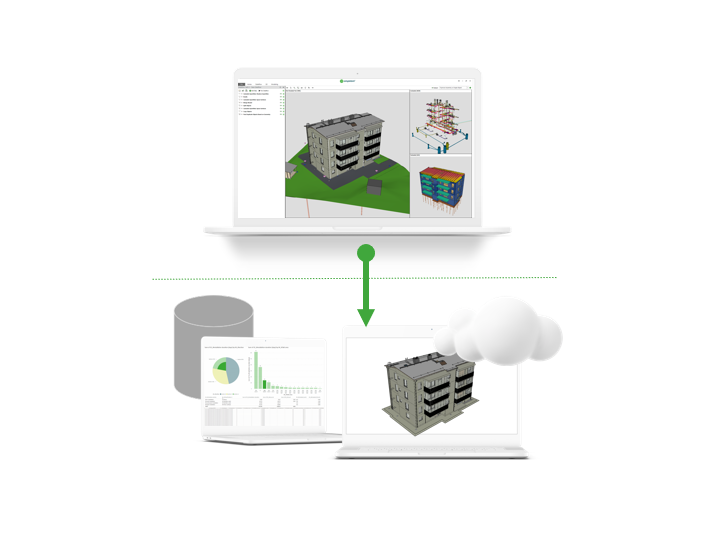BIM (Building Information Model or Modelling) can refer to the actual models but also to the modelling process. The BIM models include 3D objects representing building elements, their properties, and connections between the different elements.
There are many definitions for BIM out there, but in more general terms BIM is a tool for the mind. It expands our human capabilities to design, analyze and communicate building information. An average person can on keep 5-9 things in working memory. Even a small BIM model can have tens of thousands of building elements and hundreds of thousands of properties. Not to mention the details that go into representing the 3D geometry of a building.
With the help of BIM we can manage this huge amount of data. BIM helps us create building information in an efficient way. This huge amount of data can be exchanged with other persons or applications in a blink of an eye. The data can be analyzed and simulated in ways that were not even possible before.
Simplebim is one of these incredible tools for the mind.













